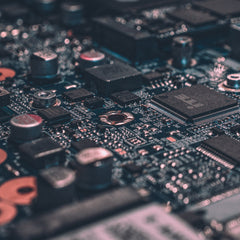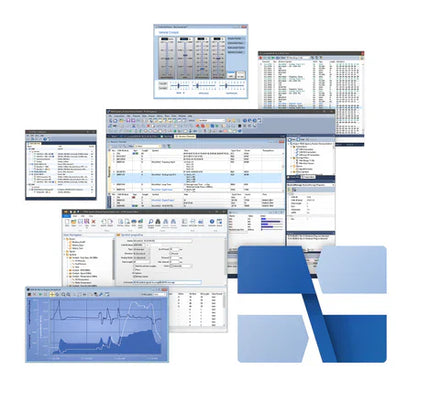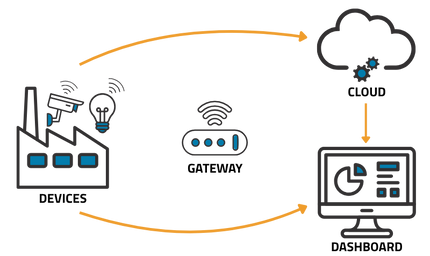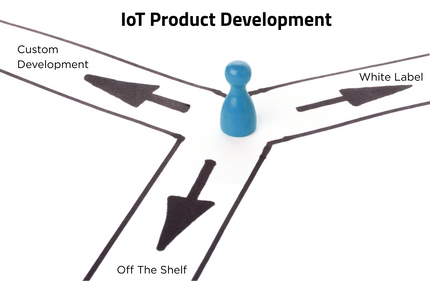Cloud computing plays a critical role in nearly every Internet of Things (IoT) deployment. From managing data to enabling secure communication, the cloud acts as the backbone of connected ecosystems. However, for manufacturers entering the IoT space, designing effective IoT cloud applications often presents new challenges.
Many of these challenges involve answering two key questions: how will a device connect to the cloud, and when should it send data?
Key Cloud Design Considerations for IoT Deployments
The "how" of IoT connectivity refers to the protocol used for communication between the device and the cloud. In early implementations, many manufacturers relied on proprietary communication methods. These were often difficult to scale, maintain, or integrate with other systems.
Today, the industry is moving toward more standardized protocols. MQTT, HTTP/HTTPS, and CoAP are common choices, each with benefits depending on device power, bandwidth, and latency needs. Choosing the right protocol ensures that devices can communicate efficiently and that future updates or integrations can be handled with minimal friction.
Several companies now offer third-party platforms that provide end-to-end IoT and cloud computing solutions. These platforms allow developers to build, manage, and deploy applications in a unified environment, making them a practical starting point for many manufacturers new to cloud architecture. Grid Connect also supports custom IoT solutions for cloud-connected products, helping teams integrate hardware, firmware, and secure cloud infrastructure from the ground up.
Optimizing IoT Data Storage with Cloud Solutions
The "when" of cloud connectivity refers to the frequency at which a device communicates with its cloud application. This is especially important for power management.
Devices connected to a continuous power source can stay online and maintain a constant connection to the cloud. This enables real-time IoT analytics and immediate data exchange. Battery-powered devices, however, must be more selective about when they connect in order to conserve energy.
In many designs, these devices connect only when triggered by an event or on a scheduled interval. Adding a periodic "heartbeat" signal can help the cloud application verify that the device is online and functional, even if no major event has occurred. This improves reliability without draining battery life unnecessarily.
Using cloud computing for IoT storage and transmission also means businesses do not need to store large volumes of data on the device. This reduces hardware requirements while enabling remote access to historical and real-time data across many devices and locations. Grid Connect supports these strategies through firmware and software customization services tailored for power efficiency and cloud-based communication if you choose to work with us to develop an IoT system.
Ensuring Security in Cloud-Connected IoT Devices
With data being sent over public or semi-public networks, security must be an early and ongoing consideration in any cloud-based IoT deployment. Devices must authenticate before sending or receiving data, and the data itself must be encrypted in transit and at rest.
Cloud infrastructure can help manage this through access controls, secure protocols, and automatic patching. Choosing a provider that offers proven security tools makes it easier to maintain a secure deployment over time. Manufacturers should also evaluate how often firmware or security credentials will be updated and whether the platform supports remote updates.
Strong security in cloud-connected IoT devices is not optional. It is a requirement for both consumer trust and long-term system integrity.
Scalable Cloud Infrastructure for IoT Applications
As IoT networks grow, so do their demands on backend systems. Cloud infrastructure must be able to support growing volumes of data, increased user access, and expanding device fleets. This includes managing system resources dynamically and delivering a consistent experience even as load increases.
A well-architected cloud platform allows businesses to deploy globally without worrying about server provisioning or capacity planning. It also helps ensure high availability and performance in both consumer and industrial applications.
Manufacturers exploring IoT and cloud computing strategies should consider platforms that allow easy scaling without costly rework. To support this process, Grid Connect’s IoT product development process includes cloud infrastructure planning from the earliest design phases.
Leveraging Cloud Computing for Real-Time IoT Analytics
One of the greatest benefits of cloud integration is the ability to analyze data as it arrives. Sensors can generate continuous data streams that inform user behavior, equipment performance, or environmental changes. Cloud platforms allow this data to be processed and acted on without delay.
This enables predictive maintenance, usage optimization, and automation workflows that increase the value of the connected product. By using cloud computing for IoT analytics, businesses gain faster insights and more accurate responses without overloading devices with onboard processing.
Final Thoughts
As more companies embrace connected technologies, the need for strong cloud infrastructure becomes more important. IoT cloud applications support secure data handling, efficient communication, and scalable device management. By understanding how and when devices should connect to the cloud, manufacturers can create products that are reliable, flexible, and ready to scale.
Grid Connect helps teams develop and deploy custom IoT solutions that take full advantage of cloud infrastructure. Whether you're planning a new product or scaling an existing platform, we can help you align your design choices with real-world performance and business goals.







